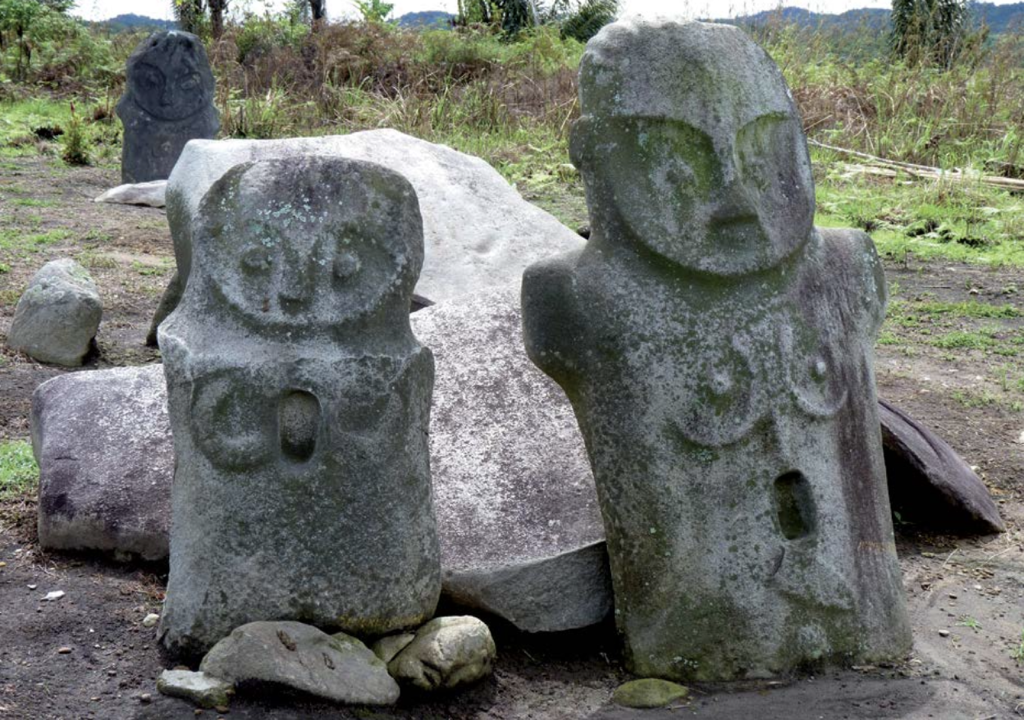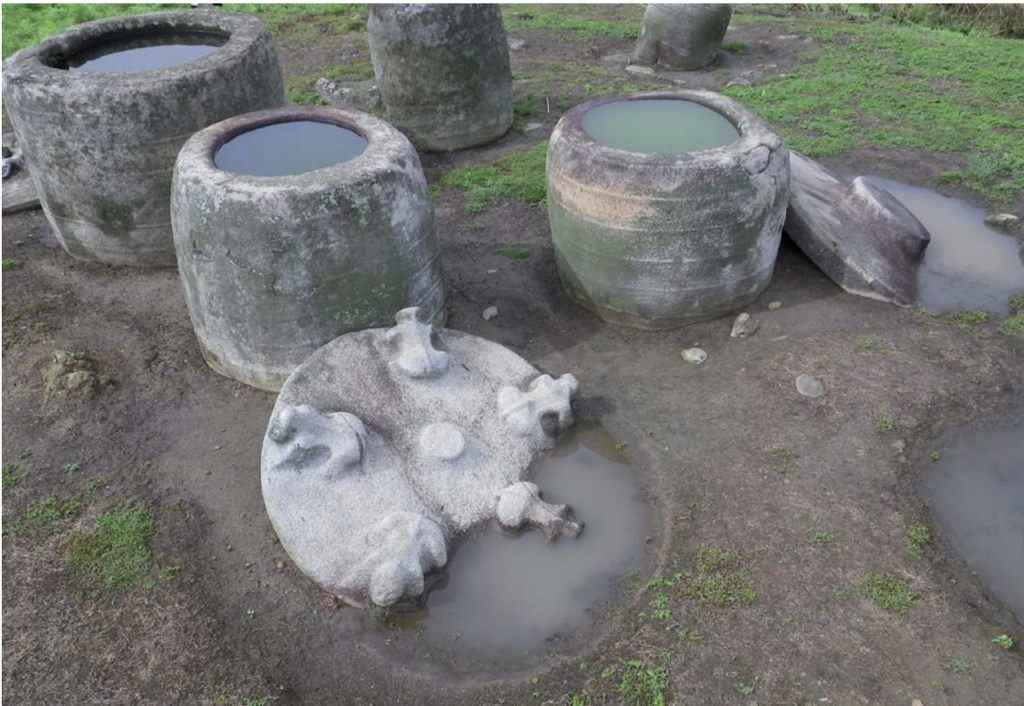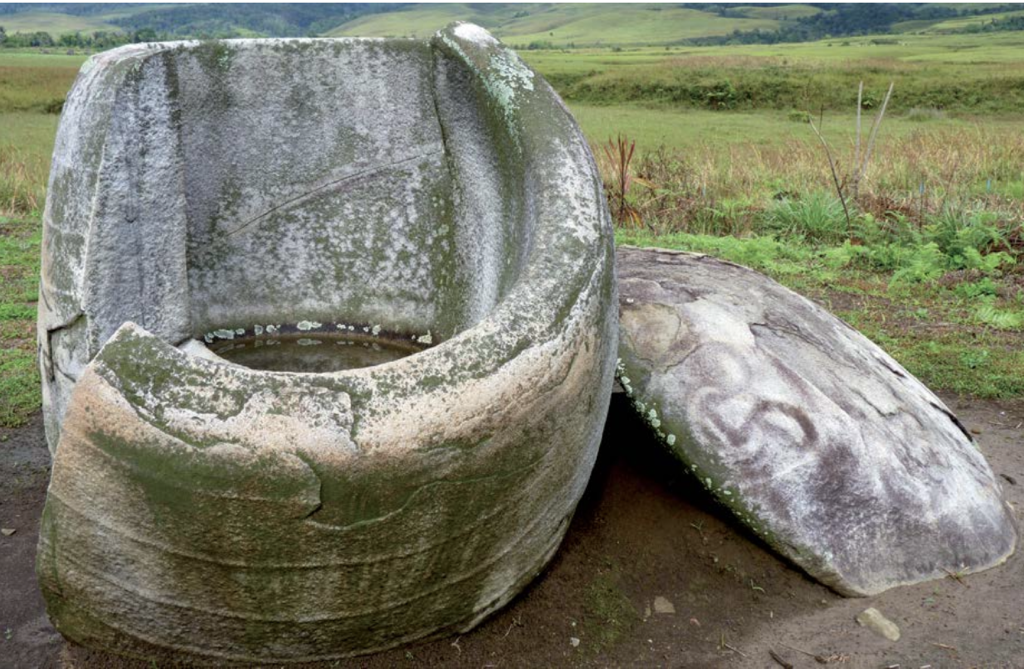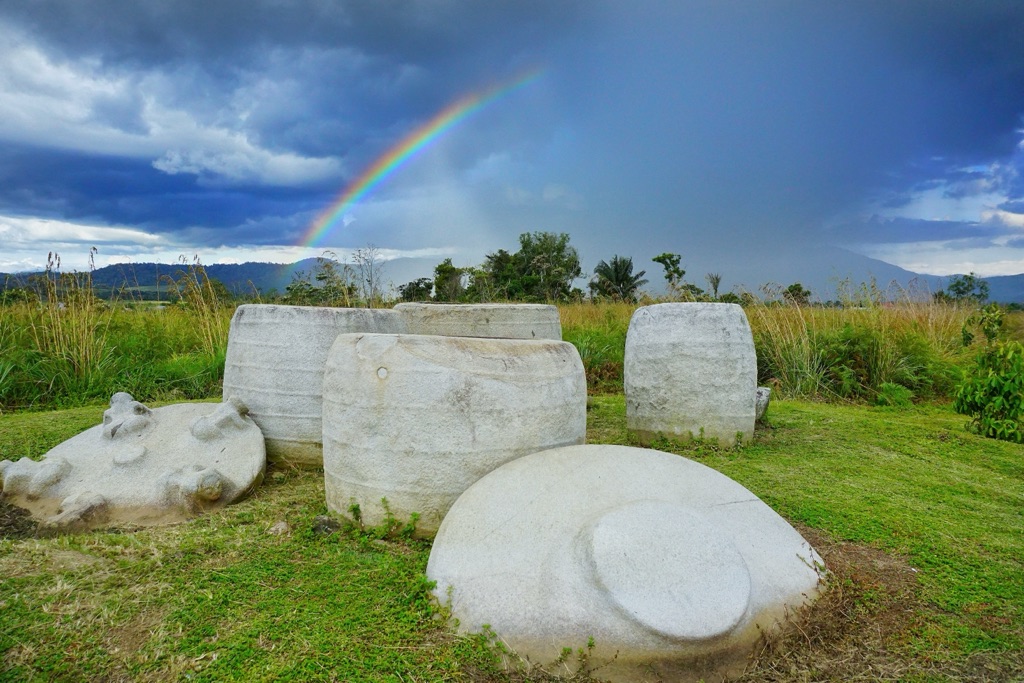Within the heart of Sulawesi’s mystic landscapes lies Pokekea, a site lucidly illustrating the intricate megalithic culture of Indonesia. As a vivid expression of prehistoric creativity and spirituality, Pokekea, nestled within Besoa Valley, captivates with its monumental jars, traditionally known as Kalamba, and an array of statues that offer glimpses into the enigmatic past of this region. The array and intricacy of the artifacts found here underline the significance of this site as a cultural and religious focal point for ancient communities.
Get your dose of History via Email

Monumental Jars and Traditional Houses of Pokekea
The Kalamba jars discovered in Pokekea are emblematic of the region’s megalithic tradition, showcasing not just the functional aspect of container-making but also representing a spiritual or ceremonial purpose that these objects likely served. Excavations conducted in the early 2000s unveiled these jars, along with traditional houses, illustrating a society that was deeply intertwined with both the metaphysical and the material world.

A detailed exploration into the artistic embellishments on these jars reveals a complex tapestry of faces and figures, carved directly onto the surface of the stone. These decorative elements, particularly striking in the monumental jar discovered, showcase a sophistication in art and a depth of cultural expression that speaks volumes of the artisans behind them. The detailed strip of faces found on one such jar perhaps symbolized communal identities or ancestral lineages, serving as an enduring testament to the beliefs and values of the societies that thrived in Pokekea.
The Statuary Ensemble in Besoa Valley
Equally compelling is the collection of statues in Pokekea, which, akin to those found in neighboring valleys, demonstrates a varied portrayal of human and possibly divine figures. The statues, especially the ones crafted from black granite, are notable both for their imposing presence and for the intricate attention to detail evident in their construction. Positioned in front of a rectangular structure, these figures likely played a significant role in the social or religious rituals of the community, possibly serving as protectors or embodiments of spiritual entities.
In deciphering the narratives of these statues, scholars and archaeologists gain invaluable insights into the cosmological views and artistic endeavors of ancient Indonesians. The choice of materials, the positioning within the landscape, and the distinct carvings each statue bears, unravel stories of a society deeply connected with its environment and steadfast in its pursuit of existential understanding.

A Reflection of Prehistoric Sulawesi
Pokekea, with its Kalamba jars and statues, stands as a compelling narrative of Sulawesi’s megalithic phase, mirroring the broader cultural and religious intricacies of Indonesia’s prehistoric societies. This site not only adds depth to our understanding of the region’s ancient past but also emphasizes the diversity and richness of Indonesia’s megalithic heritage.

As one delves into the mysteries of Pokekea, it is evident that each artifact, be it the intricately carved jars or the stoic granite statues, serves as a cultural echo from the past, inviting contemporary onlookers and scholars to explore and understand the complex tapestry of human history that is woven into the landscapes of Sulawesi.
Sources:
Indonesian Megaliths: A forgotten cultural heritage

